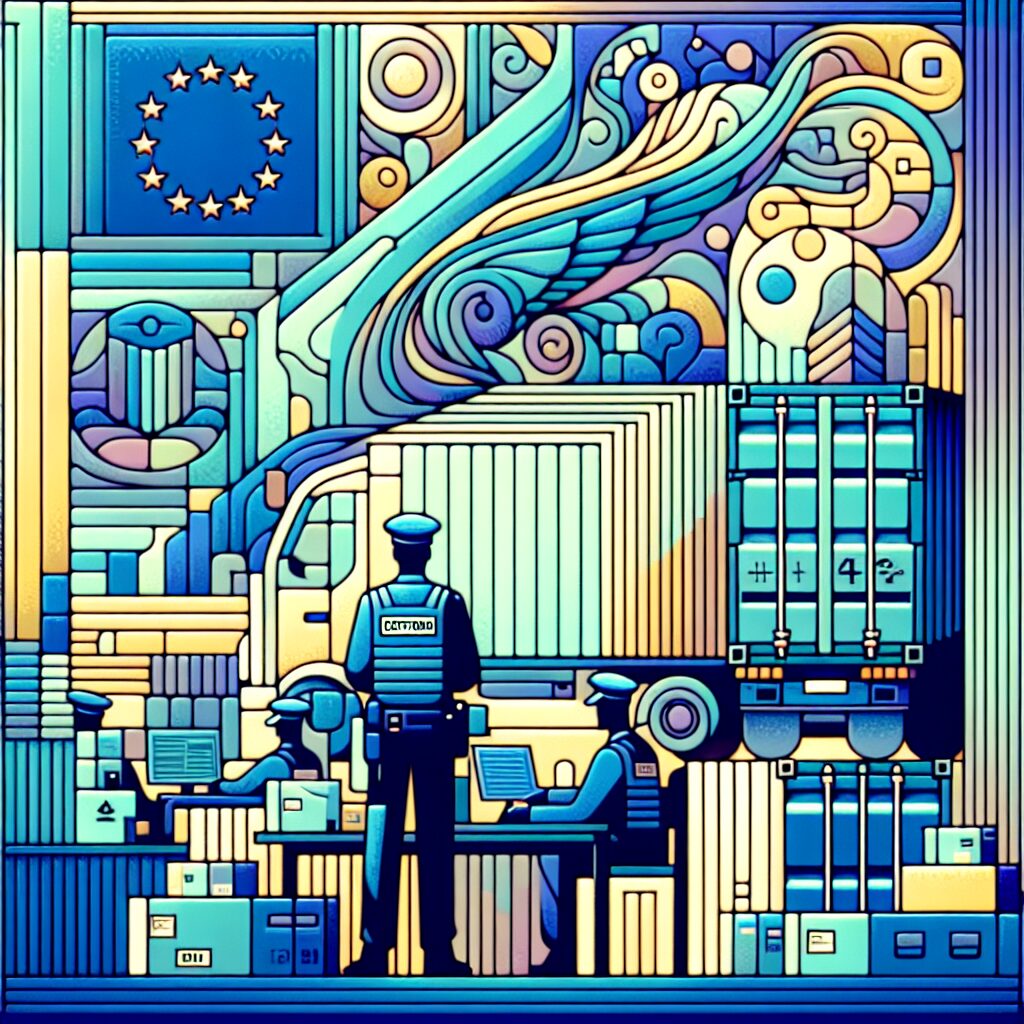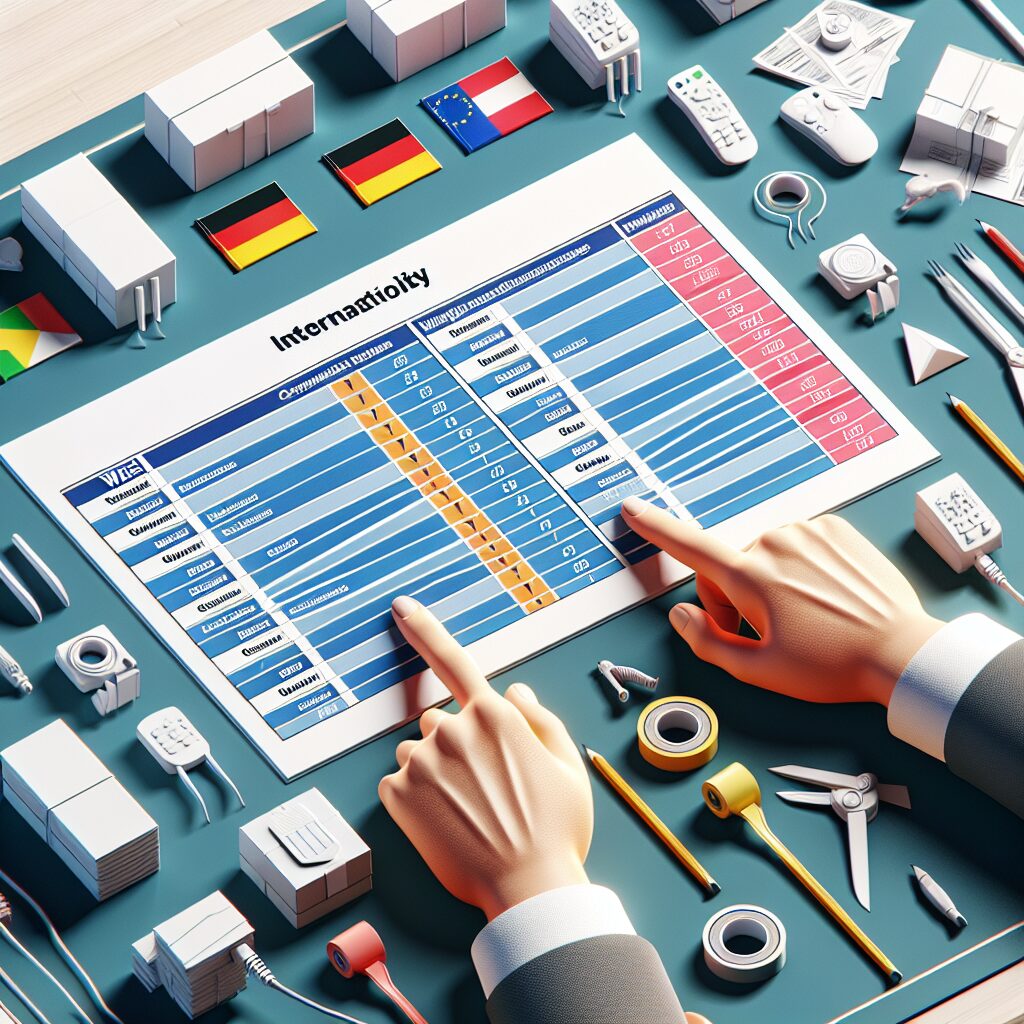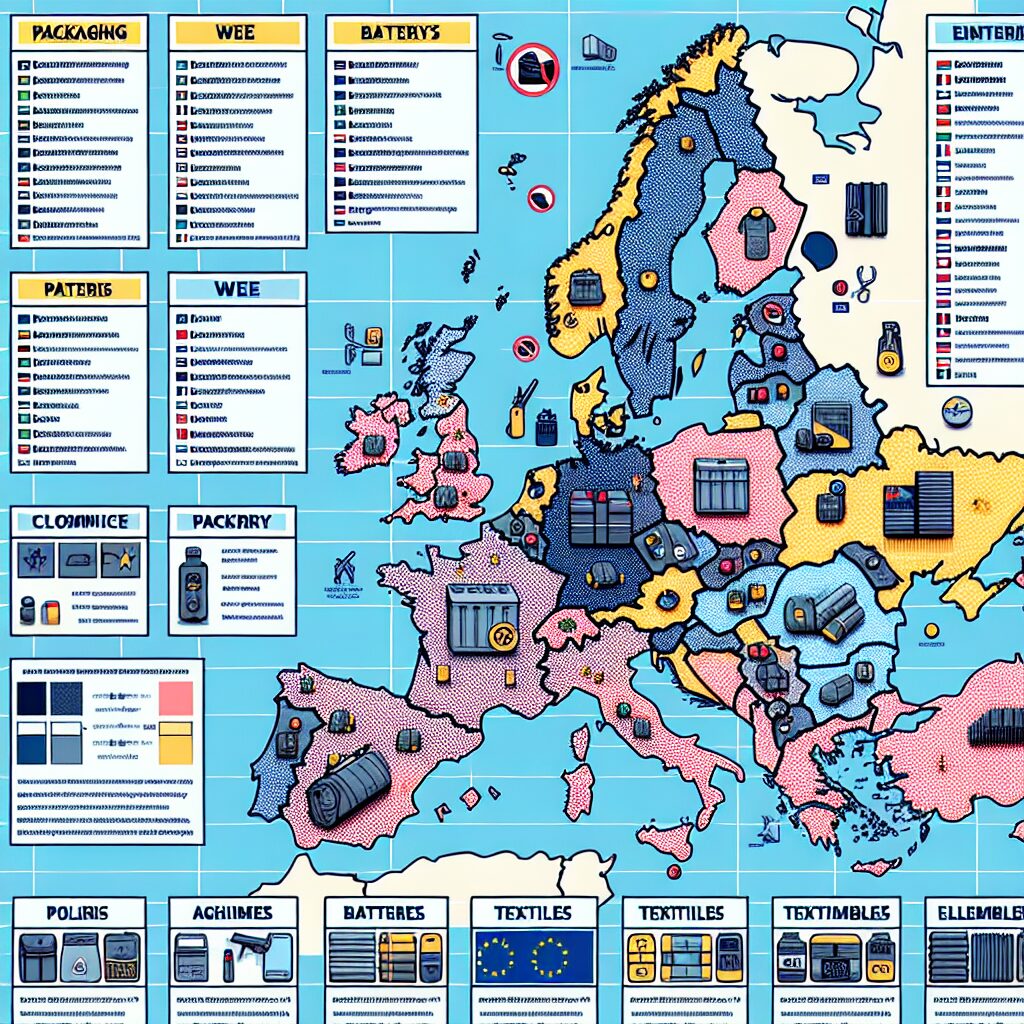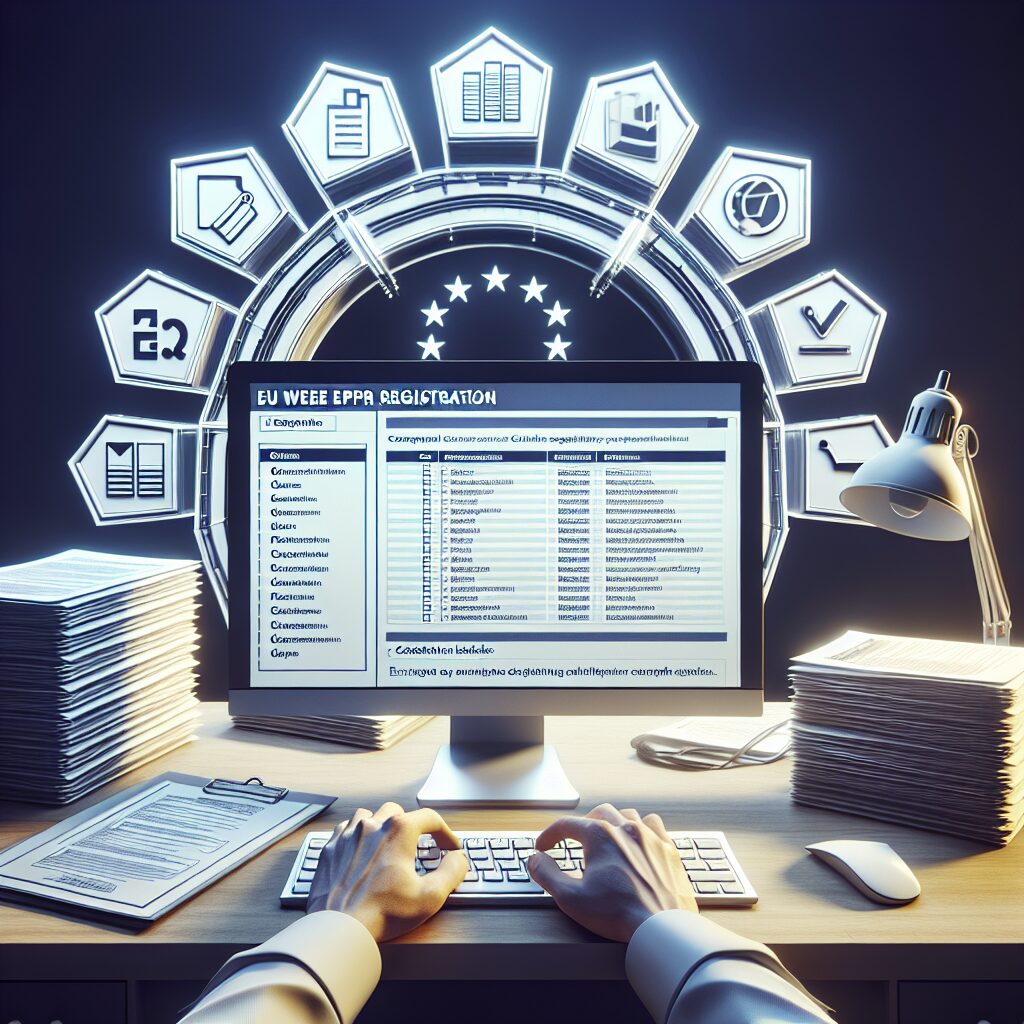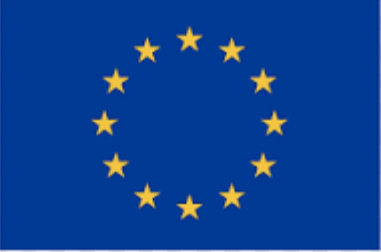About eldris
epr.eldris.ai leads the EPR sector, in fast, automated, AI Agent EU Complaince. LUCID Packaging, WEEE, and Battery Compliance for Brands, E-Commerce and Service based businesses expanding into the EU.
In This Article
- Obtain a WEEE registration number before importing electronic products into the EU.
- Display the number clearly on shipments and associated documentation.
- Ensure country-specific registrations for every EU market served.
- Coordinate WEEE compliance when using marketplaces like Amazon FBA.
- Work with customs agents to avoid delays at border crossings.
What Is a WEEE Registration Number?
A Key Identifier in EU Law
The WEEE registration number is a uniquely assigned code issued to producers and importers of electrical and electronic equipment (EEE) operating within the European Union (EU). It stands for the Waste Electrical and Electronic Equipment directive, an EU law aimed at reducing environmental waste. The directive obligates companies selling electrical goods to register with relevant national authorities and ensures proper handling of e-waste. Without a valid WEEE registration number, businesses may face barriers importing their products into the EU, delays at customs, and significant legal penalties. This number is not optional—it is a regulatory requirement tied to Extended Producer Responsibility (EPR) principles. Learn more about EU Extended Producer Responsibility (EPR) Compliance

Why You Need a WEEE Number for Customs
Border Clearance and EPR Compliance
Customs authorities in the EU perform strict checks on imported goods to ensure they meet environmental and safety regulations. For any EEE shipments entering the union, customs agents will require documentation that includes your WEEE registration number. This number signals that your company adheres to EPR obligations, covering the collection, recycling, and safe disposal of electronic waste originating from your products. Without it, shipments may be withheld, fines levied, or goods returned to the sender. Additionally, some EU countries integrate WEEE verification into their customs clearance software, automating the validation of your information against central registries. Therefore, your WEEE registration number is a pivotal element in achieving seamless cross-border trade. Registering for your official WEEE number
“Having a valid WEEE registration number is not just about regulatory compliance—it’s integral to maintaining supply chain efficiency across the EU.”
Which Products Require a WEEE Number?
Many businesses mistakenly believe only large electronics need a WEEE number, but the directive covers a very broad spectrum of items. Any product that requires electric current to operate typically qualifies as EEE under WEEE definitions. Examples include:
- Household appliances (e.g., washing machines, toasters, vacuum cleaners)
- IT equipment (e.g., computers, servers, modems)
- Telecommunications devices (e.g., smartphones, routers)
- Consumer electronics (e.g., TVs, music systems, game consoles)
- Lighting equipment (e.g., LED bulbs, desk lamps)
- Tools (e.g., power drills, electric saws)
It is essential to assess all exported product lines to determine if they fall under WEEE’s remit. Many small devices, such as charging cables or smartwatches, are also included. Read a related article
How to Apply for a WEEE Registration Number
Acquiring a WEEE registration number involves several administrative steps, and the process may vary slightly depending on the member state in which your company is first registering. Generally, the application procedure includes:
- Identifying the correct national WEEE authority — each EU country has its regulatory body or producer responsibility organisation (PRO).
- Filing a producer registration — this requires detailed company information, tax ID, authorised representatives, and a product breakdown.
- Paying any associated fees — as applicable by each country’s fee structure.
- Obtaining your unique WEEE registration number — which is issued upon successful validation of the documentation.
Once issued, the WEEE ID must be printed or affixed visibly on product labelling and referenced in shipment documents and marketplace accounts. It’s wise to retain proof of registration, as customs may call for validation. This number is granted per country, so cross-border operations often require multiple registrations.
Country-Specific WEEE Registration Processes
Each EU nation operates its own WEEE compliance system. Businesses must register in each country where products will be sold, not merely where imported. Here’s a brief look at the variances:
Germany
In Germany, registration is mandatory through Stiftung EAR (Elektro-Altgeräte Register). Prior to any product distribution, retailers and importers must register and print the issued number on all packaging. Germany enforces this rigorously, with spot inspections and major fines for defaulters.
France
In France, businesses use the ADEME system or affiliate with a PRO like Ecologic or Ecosystem. French regulations also demand regular reporting of volumes sold into the market and product categories. Interestingly, marketplaces such as Amazon verify your WEEE registration number with ADEME to allow listings to go live.
Netherlands
In the Netherlands, the National (W)EEE Register facilitates registration. Businesses must nominate authorised representatives if they are not physically based in the country.
This fragmentation necessitates strategic planning so you remain compliant wherever your goods are distributed. A unified approach using consultancy services can reduce risks.
Shipping Documents That Must Include the WEEE ID
Once obtained, your WEEE registration number must be clearly stated on several key shipping documentation points. These include:
- Commercial Invoice — often checked first by customs agents.
- Customs Declaration Form (CN22 or CN23).
- Packing List — particularly for larger shipments.
- Bill of Lading or Air Waybill.
Including your WEEE number ensures alignment with EU customs protocols and avoids shipment holds. Many logistics operators maintain internal checklists to confirm documentation compliance prior to border transit, particularly for pan-EU distribution hubs.
Penalties for Non-Compliance at Customs
Failing to adhere to WEEE obligations can result in harsh financial and legal consequences. Customs authorities have power to:
- Seize and detain your imported goods.
- Impose financial penalties, which vary by member state (fines may range from €5,000 to €100,000).
- Blacklist your business for future import permits.
- Refer your case to environmental enforcement agencies for prosecution.
In Germany and France, enforcement is particularly active due to strong environmental enforcement frameworks. Proactive registration and clear documentation are critical safeguards against such penalties.
Navigating WEEE with Amazon FBA and Marketplaces
For sellers on platforms such as Amazon FBA, eBay, or Zalando, having a valid WEEE registration number is now a gateway requirement. Amazon, in particular, mandates that sellers targeting Germany and France upload WEEE evidence before fulfilment operations can begin. Failure to supply a valid number can result in account suspension, listing removal, or sales halts.
Your WEEE responsibilities do not end with uploading a registration ID. Sellers must:
- Ensure packaging and labelling include the WEEE number
- Keep monthly or quarterly records for EPR reporting
- Synchronise registrations across fulfilment locations
If using Amazon Pan-EU fulfilment, WEEE compliance must be ensured in each destination country. Some marketplaces offer dashboards to track compliance uploads—utilise these tools efficiently to keep operations uninterrupted.
Tips to Avoid Delays at EU Border Crossings
Proactive Customs Preparation
Smooth customs clearance starts weeks before your shipment departs. Here are expert tips to avoid border setbacks:
- Maintain all WEEE registration numbers digitally for easy access during shipments.
- Coordinate with customs brokers to audit your shipment paperwork for compliance gaps.
- Include your WEEE number visibly on external shipping labels when possible.
- Use centralised customs data portals if shipping across multiple EU states
- Stay updated on national changes in WEEE legislation via monthly regulatory bulletins
Many delays are caused by documentation being deemed inadequate. By working closely with logistics agents, you can pre-empt queries and speed up handling procedures.
Conclusion: Get Compliant and Stay Competitive
[CONCLUSION_CONTENT]
Achieving compliance with WEEE regulations is more than a box-ticking exercise—it’s a strategic choice that enhances your brand’s credibility, assures smooth customs clearance, and allows access to lucrative EU markets. The WEEE registration number is a business-critical asset, offering proof that your operation upholds responsible manufacturing and distribution practices. With evolving border requirements and increasing scrutiny from marketplaces, especially Amazon, it’s imperative to remain proactive. Make WEEE part of your core compliance strategy and position your brand for success in the sustainability-conscious European market.
Great guide on weee-registration-customs-requirements-guide – Community Feedback
What is a WEEE registration number and why is it needed for customs?
A WEEE registration number is a unique ID for electronics producers under EU law, required on import/export paperwork to prove compliance and ensure smooth customs clearance.
How do I obtain a WEEE registration number?
To obtain a WEEE registration number, register with the environmental authority in each relevant EU country, submit required product details, and await approval. The process varies by nation.
What happens if my shipment lacks a valid WEEE number?
Without a valid WEEE registration number, customs can detain or reject your goods, and you may face fines or removal from sales platforms. Always provide valid documentation for shipments.


